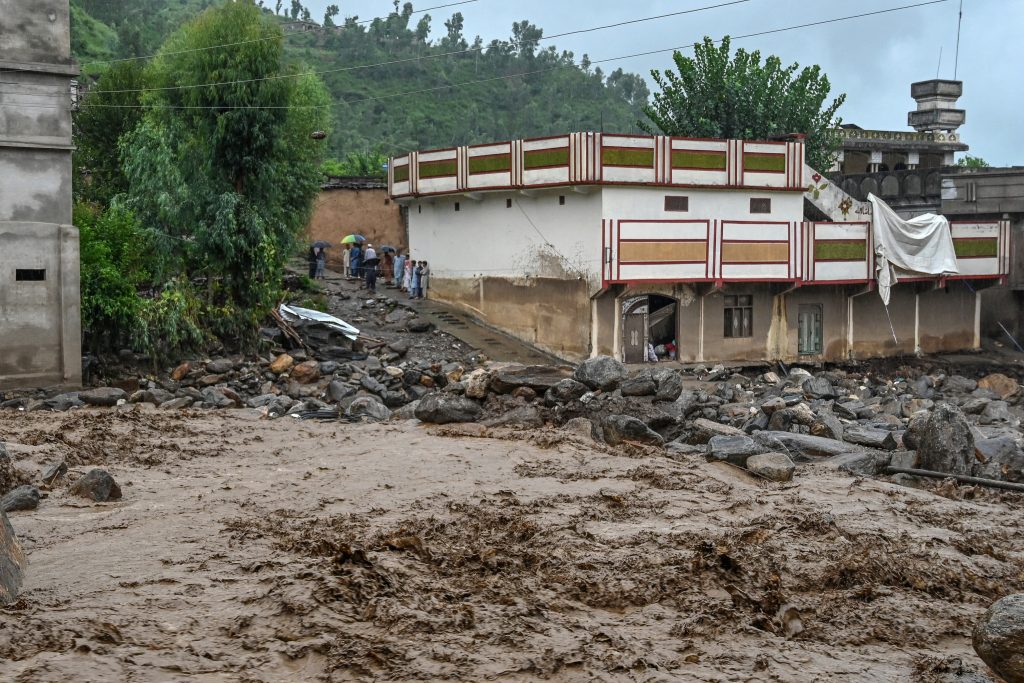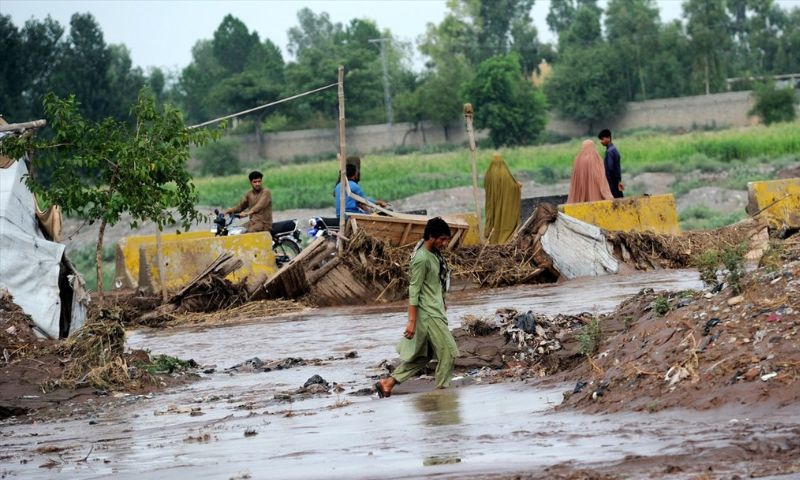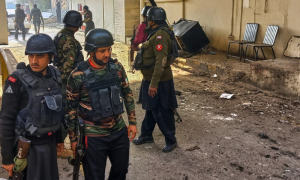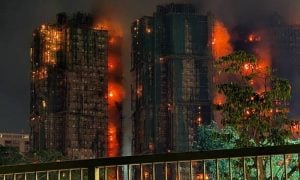ISLAMABAD: Torrential monsoon rains and flash floods have devastated Pakistan, killing 657 people since late June, the National Disaster Management Authority (NDMA) said on Monday.
The northwestern Khyber Pakhtunkhwa province has been hit the hardest, with 325 deaths reported amid flash floods, landslides and house collapses.
Cloudburst in Swabi
In Swabi district, a devastating cloudburst submerged entire villages. Deputy Commissioner Nasrullah Khan said that at least 12 houses in Darorai village were washed away, killing 15 people and trapping dozens.
“The flow of floodwaters was extremely strong, and landslides occurred at various places due to the hilly terrain,” the Deputy Commissioner said.
Nearly 100 people, most of them women and children, were rescued from rooftops as torrents swept through, he said.
In a separate incident in Gadoon’s Sar Koi Banda area of Swabi, four people, including two women and a child, were killed when the roof of a house collapsed during heavy rains, local media reported, citing hospital sources.
Flood devastation in Khyber Pakhtunkhwa
The Khyber Pakhtunkhwa Provincial Disaster Management Authority reported that Buner is the worst-hit district, accounting for 217 deaths and 120 injuries.
The PDMA said 95 houses have been damaged there, while schools and cattle have also been lost.
Shangla recorded 36 deaths, Mansehra 24, Bajaur 21, Swat 17 and Lower Dir five. In Nowshera, a roof collapse claimed two lives, while flash floods in Battagram killed three.
The PDMA confirmed the provincial government has released Rs800 million for relief in affected districts, with an additional Rs500 million earmarked for Buner.
Flood devastation in Azad Kashmir
Meanwhile, the water level in the Poonch River in Azad Jammu and Kashmir has risen, submerging nearby parks and cutting off a bridge due to overflowing water. The flood situation poses a serious threat to communities living near the river, with fears of further waterlogging.
Local authorities have also warned that landmines and other explosives laid by the Indian Army across the Line of Control (LoC) have been swept into the river, creating a grave danger to human life and property.
The district administration and relevant agencies are closely monitoring the situation and have put safety measures in place, the Deputy Commissioner of Kotli district stated. Residents, particularly children and elderly people, have been urged not to touch any suspicious or explosive objects.
Authorities said such material will be safely defused by the Civil Defence, and the public should immediately inform the district or tehsil administration and rescue services if they come across any such items.
Meanwhile, in Rawalakot, heavy rainfall caused severe flooding, claiming the life of Dr. Gul-e-Lala, a teacher from the Department of Plant Pathology at the University of Poonch Rawalakot’s Tarar Campus. Dr. Lala lost her life when her car was swept away by the floodwaters while attempting to cross a stream bridge near the campus, Basharat Mahmood, Director of Student Affairs at the University of Poonch, told WE News English.
The local administration swiftly responded to the situation, issuing advisory warnings urging residents to avoid flooded areas and stay indoors until further notice. As a precautionary measure, schools and colleges in the area have been closed until August 23.
Widespread flooding, landslides
Fresh downpours paralysed life across Khyber Pakhtunkhwa. In Peshawar, urban flooding inundated Saddar Bazaar, University Road and surrounding neighbourhoods, leaving vehicles stranded and homes waterlogged.
In Mingora, Swat, torrential rain disrupted daily activities, while landslides blocked access to villages in Buner.
Parachinar in Kurram district reported swollen streams and damaged embankments, though no casualties.

In Nowshera’s Chakki Mamrez area, a husband and wife died when their roof caved in.
Haripur witnessed flash floods that swept away bridges, cutting off the Karakoram Highway, though traffic was later restored.
National impact
While Khyber Pakhtunkhwa bore the brunt, Punjab, Sindh, Balochistan, Azad Jammu and Kashmir and Gilgit-Baltistan also reported fatalities and severe damage.
Punjab has recorded 164 deaths, Sindh 28, Balochistan 20, Gilgit-Baltistan 32, Azad Kashmir 15 and Islamabad eight in rain-related incidents since late June, the NDMA said.
Heavy rainfall lashed Multan, Chakwal, Jhang and Khushab in Punjab, submerging low-lying areas.
In Murree, thunderstorms and fog triggered power outages, while Karachi received showers on Monday morning.
Balochistan remained cloudy, with the Meteorological Department warning of rain in Zhob, Loralai and Mastung.
Rivers, dams under pressure
Authorities have issued flood warnings along the Indus River. Medium-level floods were recorded at Kalabagh, Jinnah and Chashma barrages, with inflows exceeding 430,000 cusecs.
The Indus at Taunsa Barrage also crossed medium flood levels.
Reservoirs are rapidly filling. Tarbela Dam is at 97% of capacity, while Mangla is at 71%, according to the Flood Forecasting Division.
Minor flooding continues in tributaries of the Ravi and hill torrents in southern Punjab.
Relief and rescue efforts
The Pakistan Army is spearheading relief operations in flood-hit areas of the country.
According to Radio Pakistan, army helicopters are distributing rations and shifting families to safer areas.
Pakistan Army engineers are clearing blocked roads, while medical camps are treating patients free of cost.
Army contingents are also active in Gilgit-Baltistan, where landslides blocked highways. Officials said the Islamabad-Gilgit Highway has been reopened, along with several other key routes.
NDMA Chairman Lieutenant General Inam Haider said more than 425 relief camps have been set up nationwide.
“The intensity of this year’s monsoon is 50% to 60% stronger than last year, and two to three more spells are expected until early September,” he warned.
The NDMA has placed the National Emergencies Operation Centre on high alert and is coordinating with provincial governments.
Government response
Federal Information Minister Attaullah Tarar described the restoration of flood-affected areas as a “national obligation.”
He told reporters in Islamabad that Prime Minister Shehbaz Sharif had instructed federal ministers to personally supervise relief and infrastructure restoration in the worst-hit regions.
Pakistan’s chief meteorologist, Zaheer Babar, said climate change is worsening the frequency of cloudbursts and flash floods.
He warned that construction on riverbanks and clogged waterways amplify the devastation.
The Pakistan Meteorological Department forecast that heavy rain and thunderstorms will persist across the country until at least 23 August, with vulnerable districts in Khyber Pakhtunkhwa, Punjab and Kashmir most at risk.

























